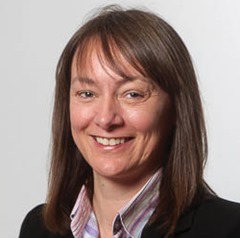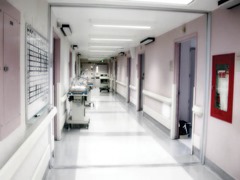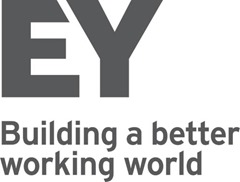Creating the future of healthcare delivery
 EY’s Justine McCarthy, Head of Healthcare, Advisory Services, and Julie Browne, Senior Manager, Government and Public Sector, explore some lessons in health care innovation which can translate from the USA to Ireland.
EY’s Justine McCarthy, Head of Healthcare, Advisory Services, and Julie Browne, Senior Manager, Government and Public Sector, explore some lessons in health care innovation which can translate from the USA to Ireland.
The healthcare industry’s next great test is the pursuit of relentless innovation – challenging long-established practices; developing and reinforcing new behaviours that focus on value, wellness and integrated care.
The EY US Health Care team recently published its annual ‘New Horizons’ report on innovation, which demonstrates that change imperatives travel even if the landscape and mechanics differ between geography. The report extracts some valuable innovation lessons and ideas for healthcare in Ireland, both North and South, as organisations grapple with the challenges of delivering higher quality care with fewer resources to a population living longer with complex chronic diseases.
“Today, innovation is an industry imperative,” said Jon Weaver, EY Americas Health Care Sector Leader. “Health care organisations are being asked to overcome inertia, break through the status quo and dynamically create the future of care through innovative approaches to delivery and payment.”
The national healthcare reforms of Future Health (Republic of Ireland) and Transforming Your Care (Northern Ireland) are blueprints for transformational change including structural, financial and service elements which have the potential to radically reshape the physical and people landscape in health and social care. Healthcare providers on both sides of the border have an exceptional opportunity to create the future through innovative approaches to care delivery.
 We think the lessons from the US are worth repeating:
We think the lessons from the US are worth repeating:
1. Cost savings and value creation – Providers and commissioners need to collaborate to identify and implement cost-saving measures in population health, chronic disease management programmes, and in the pursuit of reduced variation and increasing quality.
2. Patient care transformation – Healthcare organisations must continue to work together to eliminate the barriers between silos of service and information with the goal of creating more seamless, cost-effective and patient-centred care.
3. Health information technology – Innovations that create better use of often already existing data, such as electronic health records, mobile technologies and clinician and patient decision-making tools, are vital to a continuously improving health system. The pace of change is swift, and the number of ways in which providers, commissioners and patients receive and share health information is rapidly multiplying – creating unprecedented opportunities to solve problems, increase efficiencies and better co-ordinate care.
4. Integration opportunities – Providers and commissioners are seeking partners through a variety of innovative structures with the goal of developing fully integrated health care delivery networks in an accelerated timeframe.
5. Workforce initiatives – Innovations are being tested to mitigate workforce shortages, maximise resources and create the workforce of the future. The new workforce will deliver and support emerging care models, including expanded roles for current health professionals, new types of workers to support care transformation and team-based models that optimise a mix of health providers.
In the following section, we look at three key areas of delivery innovation from the US and compare these with the healthcare reforms across the island of Ireland.
Extending the care team
In 2014, millions of Americans will enter the health system at a time when the industry is already challenged by a shortage of physicians. The Association of American Medical Colleges estimates that by 2020, the US will have 91,500 too few physicians to meet the nation’s needs. Innovations are being tested to mitigate these shortages, maximise resources and create the workforce of the future.
Progressive medical practices are shifting from traditional physician-centred models to patient-focused teams that optimise a mix of health providers and increase primary care access for patients. These teams typically include advanced practice registered nurses, physician assistants and other allied health providers – known as physician extenders – who broaden the reach of physician capabilities and allow all professionals to practice at the top of their licence.
In Northern Ireland, the Integrated Care Partnership (ICP) model – a formal network of health and care professionals – plans to shift from the traditional doctor-centred model to patient-focused teams. Seventeen ICPs located across Northern Ireland will typically include GPs, community practitioners such as pharmacists and opticians, hospital specialists and representatives of the independent and voluntary sectors, patients and carers.
 In the US, extending the care team has led to a lower cost alternative to physicians which in turn has helped fill the gaps anticipated by a growing physician shortage. In Northern Ireland, the ICP model is one of the service model solutions which bring care closer to home facilitating the shift of resources out of the hospital setting to manage appropriate levels of acuity in the community. Crucially, the focus of the ICP will be on promoting health and well-being and ‘embedding’ prevention into services.
In the US, extending the care team has led to a lower cost alternative to physicians which in turn has helped fill the gaps anticipated by a growing physician shortage. In Northern Ireland, the ICP model is one of the service model solutions which bring care closer to home facilitating the shift of resources out of the hospital setting to manage appropriate levels of acuity in the community. Crucially, the focus of the ICP will be on promoting health and well-being and ‘embedding’ prevention into services.
Practically, this will include more screening and immunisation programmes in the community, providing more health advice through pharmacies, and allied health professionals being involved in secondary prevention. Concrete examples of how care could change include utilising hospital specialists as consultants to the workforce. This model readily fits with diabetes, where often the regularity of GP visiting and the often co-morbid conditions such as cardiovascular disease means that the need to influence patient care and outcomes needs to happen through the primary care team, not in isolation.
As health care systems move towards better co-ordinated care, more effective management of chronic disease, and ongoing wellness programs, new kinds of jobs are emerging. For example, patient care co-ordinators can serve as advocates, working with patients, care-givers and administrators to reach health care goals.
Chronic disease management specialists keep patients engaged in their care through motivational coaching. Community health workers – lay people trained by medical and public health professionals – support behaviours that can improve lifestyle choices. Grand-Aides®, a new kind of nurse extender, use telephone protocols and home visits to improve patient access to care and to reduce avoidable emergency room visits.
The pattern of change in US workforce should be of great interest to human resource professionals and professional associations across the island of Ireland. Here, the skills and experience of the health and social care workforce will broaden, adapt and act differently within new models of service provision and as new service models, such as the ICP, become the norm. It is important that these new models are enabled through the establishment of educational frameworks to support broader scopes of practice for all members of the care team.
Population health management
In the transition to accountable care in the US, where reimbursement is increasingly tied to quality and outcomes, providers will be paid to manage not only individuals but their patient population as a whole. This lends itself to a different kind of practice model. Providers are effectively incentivised to redesign care processes in order to keep chronic-care patients healthy and out of emergency departments and hospitals. More and different kinds of resources – from clinical care co-ordinators to chronic disease management specialists – will also be needed to engage patients in their care and drive positive outcomes.
Innovations in population health management (PHM) are a key catalyst for success. Through physician-supervised interventions, PHM focuses on identifying different parts of the population and then tailoring input to their needs. To achieve this, patients are stratified into well-defined risk groups, and different care strategies are developed based on each group’s needs – helping drive down costs by ensuring physicians deliver the right intervention to the right patient at the right time.
Effective PHM requires robust business analytics and data management, captured in a way that facilitates structured decision-making. Aided by the right technology, providers can continuously innovate by identifying and applying appropriate care interventions, efficiently managing patient outreach and monitoring compliance with evidence-based guidelines.
‘Future Health: A Strategic Framework for Reform of the Health Service 2012-2015’ sets out the Republic of Ireland’s approach to reform through four key pillars. One of these pillars, financial reform, envisages a radical model for incentivising the shift of treatment out of the hospital setting to enhanced primary and community care alternatives, known as ‘Money Follows the Patient’ or the MFTP funding model.
The MFTP funding model plans to create the kind of incentives that encourage treatment at the lowest level of complexity. The MFTP system will be designed so that money can follow the patient out of the hospital setting to primary care and related services. This, along with other initiatives such as the introduction of integrated payment systems, will help to support integration between community and hospital care.
An example of how this could be used would be implementing a pricing model for insulin starts in diabetes. Without specifying the location of the service and seeking innovation in how the service is delivered, a new approach (which had largely fallen to hospital teams in the past) can be developed in primary care with the appropriate oversight of specialists. This model can lower the cost to the system, and increase the size of the workforce able to respond to the growing incidence of diabetes.
Engagement and technology
Thanks to innovations in mobile health, or m-Health, medical practices in the US are improving patient outcomes – and satisfaction – by helping patients outside the office setting. Physicians are also seeing a boost in productivity and in their bottom line as they maximise patient outreach and improve efficiencies in healthcare costs.
Through such technologies as smartphones, tablets and telehealth devices, physicians can access patient information and diagnostic insights from wherever they are. Patients can receive health reminders, log into a personal health record or patient portal, and send data to physicians from home monitoring.
From a cost management perspective, e-Health can offer a robust value proposition for providers, including:
• conducting follow-up visits by secure video-conferencing to avoid readmissions;
• supporting both synchronous and asynchronous physician-to physician consultation to improve diagnoses and potentially decrease patient transfers;
• connecting with patients between periodic appointments for motivation, course correction and overall disease management; and
• addressing physician workforce shortages.
In health care, the need for new approaches to historic industry challenges has never been more acute. Containing costs without cutbacks in coverage or services calls for new ways of thinking and acting. Through such evolving approaches, many providers are reaping the benefits that innovation can have in ensuring success on the next horizon of integrated, value-driven, patient-centred care.
Innovations in ‘care at a distance’ technologies offer new ways for providers to navigate resource constraints and manage increased demand more efficiently. Remote monitoring services such as the e-ICU provide synchronous, real-time alerts and notifications that can significantly improve patient outcomes while reducing resource use.
Other services, such as e-trauma, can extend clinical knowledge to remote, understaffed locations to inform critical decision-making. Video-conferencing and remote monitoring devices have also found their way into the home, enabling patients to connect conveniently with their providers for virtual visits, course correction and improved disease management.
The new era of health care delivery opens unprecedented opportunities for the industry to address workforce challenges with fresh approaches and renewed vigour. With an eye toward innovation, providers can help mitigate shortages, maximise resources and deliver the future: team-based, high-value, patient-centred ‘care anywhere’.
In Northern Ireland, the Telemonitoring NI service is heading into its third year and to date more than 2,000 patients have benefited from the service. The Telemonitoring Centre runs a clinical triage service, which is delivered in Northern Ireland by nurses to monitor readings such as blood pressure and weight on a daily basis. This remote management allows patients who would otherwise have to travel to their GP or hospital to be monitored in their own homes. This means less stress for patients and helps them in understanding and managing their condition.
The service has an ambitious programme for development and, in 2014, plans to accelerate the uptake of telehealth into broader clinical conditions and expand into telecare.
Innovation is the ability to act on new ideas, harnessing the energy, commitment and resources within a particular organisation to improve performance and ultimately increase value for stakeholders. Today more than ever for health care providers in Ireland, North and South, an innovative approach will require a strong foundation, the capacity for growth and an eye for emerging opportunity.
Justine and Julie can be contacted via justine.mccarthy@ie.ey.com and jbrowne2@uk.ey.com respectively.






